Instruction
How to improve your putting arc
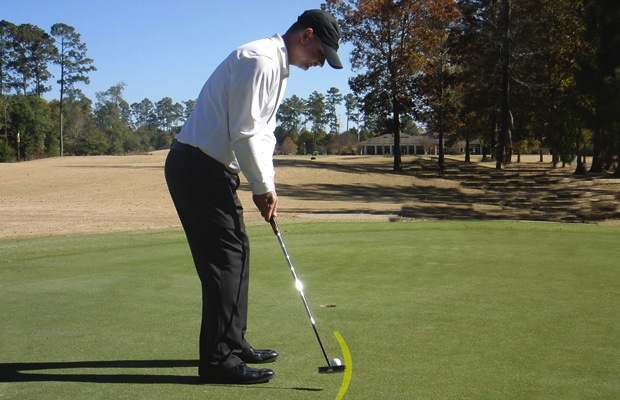
Golf is played on an inclined plane, which is established when we bend forward to address the ball. This angled plane dictates the club swing on an arc.
An arcing motion is present in all golf strokes whether you are swinging an iron, a driver or putter. On short putts the arc is smaller, so it may “FEEL” straight back and straight through, but there should still be a slight inward movement of the putter head during the back and forward swings.

A common mistake that I see is the putter head moving outside the target line on the backstroke, accompanied by a blocking action and no release of the putter face on the through stroke. Most golfers then employ some type of breakdown in the lead wrist in an attempt to square the face, which results in inconsistent loft and off-center strikes at impact. An arcing stroke would see the putter head moving slightly inside the target line on the back stroke, then naturally swinging inside once again on the through stroke — simply a pendulum motion, executed on an inclined plane.
Complementary Angles
To improve your putting arc, let’s begin with a solid address position. I call this type of setup “Complementary Angles” as it encourages the putter to swing in a way that requires very few compensations.
The address position is so crucial because we want to establish clear and accurate relationships between our target line, putter, and body. Complementary Angles means we will be stacking one good position on top of the next. An easy way to practice improving your angles both indoors and out is to draw a few lines on the reflective side of a CD or DVD disc. The first line will traverse the center of the disc and represent our intended starting line. Draw a second line perpendicular to the first line and directly behind the ball. This line will ensure that our putter face is square to our intended starting line. Last, draw a third line parallel to the first line just inside where the ball will be.
When setup properly, you should see your eyes on top of this line in the reflection provided by the disc. Setting up with your eyes slightly inside the target line provides more freedom for your hands and arms to swing while encouraging the forearms to rotate slightly during the stroke, thus transporting the putter on the desired path.
Grip in the fingers, heel pad on top
Next, we want to adopt a grip position that encourages the forearms to track properly during the stroke. Contrary to the “Lifeline” grip that’s commonly taught, we will incorporate a hold with the heel pad of our lead hand on top. As in your full swing, utilizing the heel pad provides leverage and control while removing tension from your thumb which radiates up the forearm.
Finger Grip In Four Steps

- With your lead arm hanging naturally, curl your last three fingers around the grip and rest your heel pad on top.
- Remove the thumb and index finger.
- Rotate your trail forearm slightly clockwise and slide the four fingers onto the grip. Connect the heel pad of the trail hand to the lead hand’s middle and ring fingernails for stability.
- Allow the thumbs to rest on the grip with no tension.
Notice that there is now an air pocket under your lead thumb pad and the putter head feels light. An excellent training aid that I use to quickly identify a proper fingers grip is Master Putting Instructor Pat O’Brien’s “Perfect Putting Grip.” The PPG is a decal that adheres to your existing putter grip, featuring heel pad and finger placement markings.
Backward, Upward and Inward
Now that we have completed a setup and grip comprised of “Complementary Angles,” the forearms can naturally rotate back and through. To rid yourself of any old tendencies such as bringing the putter back “outside,” place an object (alignment stick, tees, sleeve of balls) just outside the toe of your putter to verify that the club is working slightly away from the object as you swing back.
Instruction
The Wedge Guy: Beating the yips into submission

There may be no more painful affliction in golf than the “yips” – those uncontrollable and maddening little nervous twitches that prevent you from making a decent stroke on short putts. If you’ve never had them, consider yourself very fortunate (or possibly just very young). But I can assure you that when your most treacherous and feared golf shot is not the 195 yard approach over water with a quartering headwind…not the extra tight fairway with water left and sand right…not the soft bunker shot to a downhill pin with water on the other side…No, when your most feared shot is the remaining 2- 4-foot putt after hitting a great approach, recovery or lag putt, it makes the game almost painful.
And I’ve been fighting the yips (again) for a while now. It’s a recurring nightmare that has haunted me most of my adult life. I even had the yips when I was in my 20s, but I’ve beat them into submission off and on most of my adult life. But just recently, that nasty virus came to life once again. My lag putting has been very good, but when I get over one of those “you should make this” length putts, the entire nervous system seems to go haywire. I make great practice strokes, and then the most pitiful short-stroke or jab at the ball you can imagine. Sheesh.
But I’m a traditionalist, and do not look toward the long putter, belly putter, cross-hand, claw or other variation as the solution. My approach is to beat those damn yips into submission some other way. Here’s what I’m doing that is working pretty well, and I offer it to all of you who might have a similar affliction on the greens.
When you are over a short putt, forget the practice strokes…you want your natural eye-hand coordination to be unhindered by mechanics. Address your putt and take a good look at the hole, and back to the putter to ensure good alignment. Lighten your right hand grip on the putter and make sure that only the fingertips are in contact with the grip, to prevent you from getting to tight.
Then, take a long, long look at the hole to fill your entire mind and senses with the target. When you bring your head/eyes back to the ball, try to make a smooth, immediate move right into your backstroke — not even a second pause — and then let your hands and putter track right back together right back to where you were looking — the HOLE! Seeing the putter make contact with the ball, preferably even the forward edge of the ball – the side near the hole.
For me, this is working, but I am asking all of you to chime in with your own “home remedies” for the most aggravating and senseless of all golf maladies. It never hurts to have more to fall back on!
Instruction
Looking for a good golf instructor? Use this checklist

Over the last couple of decades, golf has become much more science-based. We measure swing speed, smash factor, angle of attack, strokes gained, and many other metrics that can really help golfers improve. But I often wonder if the advancement of golf’s “hard” sciences comes at the expense of the “soft” sciences.
Take, for example, golf instruction. Good golf instruction requires understanding swing mechanics and ball flight. But let’s take that as a given for PGA instructors. The other factors that make an instructor effective can be evaluated by social science, rather than launch monitors.
If you are a recreational golfer looking for a golf instructor, here are my top three points to consider.
1. Cultural mindset
What is “cultural mindset? To social scientists, it means whether a culture of genius or a culture of learning exists. In a golf instruction context, that may mean whether the teacher communicates a message that golf ability is something innate (you either have it or you don’t), or whether golf ability is something that can be learned. You want the latter!
It may sound obvious to suggest that you find a golf instructor who thinks you can improve, but my research suggests that it isn’t a given. In a large sample study of golf instructors, I found that when it came to recreational golfers, there was a wide range of belief systems. Some instructors strongly believed recreational golfers could improve through lessons. while others strongly believed they could not. And those beliefs manifested in the instructor’s feedback given to a student and the culture created for players.
2. Coping and self-modeling can beat role-modeling
Swing analysis technology is often preloaded with swings of PGA and LPGA Tour players. The swings of elite players are intended to be used for comparative purposes with golfers taking lessons. What social science tells us is that for novice and non-expert golfers, comparing swings to tour professionals can have the opposite effect of that intended. If you fit into the novice or non-expert category of golfer, you will learn more and be more motivated to change if you see yourself making a ‘better’ swing (self-modeling) or seeing your swing compared to a similar other (a coping model). Stay away from instructors who want to compare your swing with that of a tour player.
3. Learning theory basics
It is not a sexy selling point, but learning is a process, and that process is incremental – particularly for recreational adult players. Social science helps us understand this element of golf instruction. A good instructor will take learning slowly. He or she will give you just about enough information that challenges you, but is still manageable. The artful instructor will take time to decide what that one or two learning points are before jumping in to make full-scale swing changes. If the instructor moves too fast, you will probably leave the lesson with an arm’s length of swing thoughts and not really know which to focus on.
As an instructor, I develop a priority list of changes I want to make in a player’s technique. We then patiently and gradually work through that list. Beware of instructors who give you more than you can chew.
So if you are in the market for golf instruction, I encourage you to look beyond the X’s and O’s to find the right match!
Instruction
What Lottie Woad’s stunning debut win teaches every golfer

Most pros take months, even years, to win their first tournament. Lottie Woad needed exactly four days.
The 21-year-old from Surrey shot 21-under 267 at Dundonald Links to win the ISPS Handa Women’s Scottish Open by three shots — in her very first event as a professional. She’s only the third player in LPGA history to accomplish this feat, joining Rose Zhang (2023) and Beverly Hanson (1951).
But here’s what caught my attention as a coach: Woad didn’t win through miraculous putting or bombing 300-yard drives. She won through relentless precision and unshakeable composure. After watching her performance unfold, I’m convinced every golfer — from weekend warriors to scratch players — can steal pages from her playbook.
Precision Beats Power (And It’s Not Even Close)
Forget the driving contests. Woad proved that finding greens matters more than finding distance.
What Woad did:
• Hit it straight, hit it solid, give yourself chances
• Aimed for the fat parts of greens instead of chasing pins
• Let her putting do the talking after hitting safe targets
• As she said, “Everyone was chasing me today, and managed to maintain the lead and played really nicely down the stretch and hit a lot of good shots”
Why most golfers mess this up:
• They see a pin tucked behind a bunker and grab one more club to “go right at it”
• Distance becomes more important than accuracy
• They try to be heroic instead of smart
ACTION ITEM: For your next 10 rounds, aim for the center of every green regardless of pin position. Track your greens in regulation and watch your scores drop before your swing changes.
The Putter That Stayed Cool Under Fire
Woad started the final round two shots clear and immediately applied pressure with birdies at the 2nd and 3rd holes. When South Korea’s Hyo Joo Kim mounted a charge and reached 20-under with a birdie at the 14th, Woad didn’t panic.
How she responded to pressure:
• Fired back with consecutive birdies at the 13th and 14th
• Watched Kim stumble with back-to-back bogeys
• Capped it with her fifth birdie of the day at the par-5 18th
• Stayed patient when others pressed, pressed when others cracked
What amateurs do wrong:
• Get conservative when they should be aggressive
• Try to force magic when steady play would win
• Panic when someone else makes a move
ACTION ITEM: Practice your 3-6 foot putts for 15 minutes after every range session. Woad’s putting wasn’t spectacular—it was reliable. Make the putts you should make.
Course Management 101: Play Your Game, Not the Course’s Game
Woad admitted she couldn’t see many scoreboards during the final round, but it didn’t matter. She stuck to her game plan regardless of what others were doing.
Her mental approach:
• Focused on her process, not the competition
• Drew on past pressure situations (Augusta National Women’s Amateur win)
• As she said, “That was the biggest tournament I played in at the time and was kind of my big win. So definitely felt the pressure of it more there, and I felt like all those experiences helped me with this”
Her physical execution:
• 270-yard drives (nothing flashy)
• Methodical iron play
• Steady putting
• Everything effective, nothing spectacular
ACTION ITEM: Create a yardage book for your home course. Know your distances to every pin, every hazard, every landing area. Stick to your plan no matter what your playing partners are doing.
Mental Toughness Isn’t Born, It’s Built
The most impressive part of Woad’s win? She genuinely didn’t expect it: “I definitely wasn’t expecting to win my first event as a pro, but I knew I was playing well, and I was hoping to contend.”
Her winning mindset:
• Didn’t put winning pressure on herself
• Focused on playing well and contending
• Made winning a byproduct of a good process
• Built confidence through recent experiences:
- Won the Women’s Irish Open as an amateur
- Missed a playoff by one shot at the Evian Championship
- Each experience prepared her for the next
What this means for you:
• Stop trying to shoot career rounds every time you tee up
• Focus on executing your pre-shot routine
• Commit to every shot
• Stay present in the moment
ACTION ITEM: Before each round, set process goals instead of score goals. Example: “I will take three practice swings before every shot” or “I will pick a specific target for every shot.” Let your score be the result, not the focus.
The Real Lesson
Woad collected $300,000 for her first professional victory, but the real prize was proving that fundamentals still work at golf’s highest level. She didn’t reinvent the game — she simply executed the basics better than everyone else that week.
The fundamentals that won:
• Hit more fairways
• Find more greens
• Make the putts you should make
• Stay patient under pressure
That’s something every golfer can do, regardless of handicap. Lottie Woad just showed us it’s still the winning formula.
FINAL ACTION ITEM: Pick one of the four action items above and commit to it for the next month. Master one fundamental before moving to the next. That’s how champions are built.
PGA Professional Brendon Elliott is an award-winning coach and golf writer. You can check out his writing work and learn more about him by visiting BEAGOLFER.golf and OneMoreRollGolf.com. Also, check out “The Starter” on RG.org each Monday.
Editor’s note: Brendon shares his nearly 30 years of experience in the game with GolfWRX readers through his ongoing tip series. He looks forward to providing valuable insights and advice to help golfers improve their game. Stay tuned for more Tips!





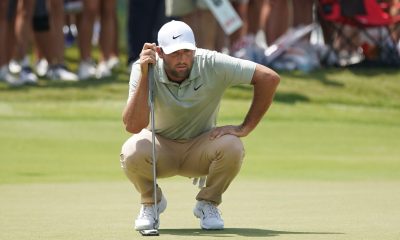

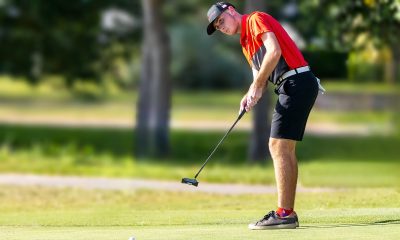



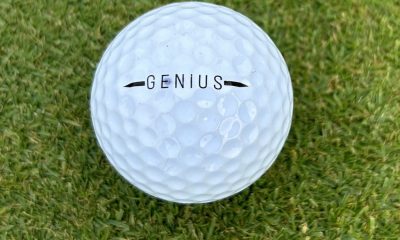



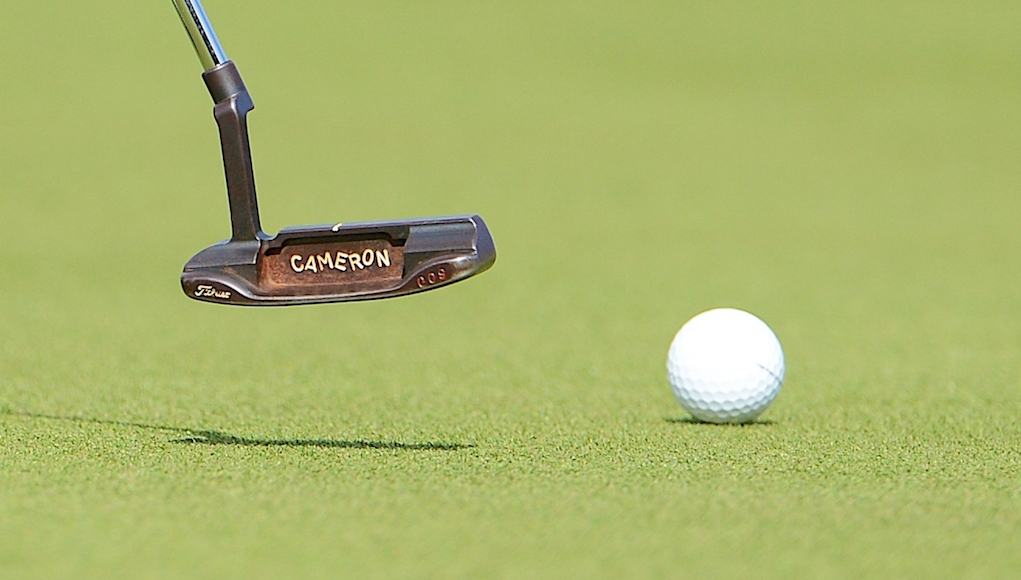








Mark s
Mar 15, 2017 at 9:21 pm
When I try this grip it feels like I need a shorter putter with a flatter lie angle. Does that seem right?
Pingback: ben crenshaw putting grip | World's Hourly News
Pingback: Ben Crenshaw Putting Grip | Cotton Candy
Pingback: Ben Crenshaw Putting Grip | Pen Pal
Pingback: Ben Crenshaw Putting Grip | admirals blog
Pingback: Ben Crenshaw Putting Grip | Just A News
Pingback: Ben Crenshaw Putting Grip | just for fun
manz60
Jan 1, 2015 at 6:48 pm
Thanks for your article. I’ve read the Dave Pelz Putting’Bible’ and he refers to a PILS Stroke (Perfect In Line Stroke). He used a grid and special photography to show strokes that appear to go slightly inside square to inside (like a screen door), but actually go straight back and thru. He refered to this as an optical illusion. You need to see the stroke from the target line or from above the ball. Otherwise if you view the stroke from head on (like on TV), the stroke will be seen as a ‘screen door’ but its not.
The arms hang straight down from the shoulders to create a vertical penduleum and despite the lie angle of the putter, the putter head moves straight back and thru.
ref: p81 Pelz Putting Bible
M60
Michael Howes
Jan 1, 2015 at 10:55 pm
Hello M60 – I have also read Mr. Pelz ‘Putting Bible, as well as ‘Putt Like The Pros’ and am familiar with his PILS method. Here are a few points I believe worth noting in the above excerpt. Having access to current technology like SAM Putt Lab, I will say that the putter does swing on an arc. This is due to the angle of the club shaft and fact that we are bent over at the waist to address a ball on the ground, which we are standing to the side of. The degree of arc is greatly affected by our amount of forward bend, eye placement, forearm position, and other address conditions. Also if I remember correctly, the PERCY model used to demonstrate the PILS stroke had NO wrist or elbow joints.
My experience has been that golfers who are trying to truly execute a SBST stroke must make many compensations in an attempt to keep the putter from doing what it naturally wants to do, which is swing on an arc. These compensations usually show up as the putter head moving outside on the way back with a closed face, followed by a blocking type through stroke. I also see these players set up with their eyes positioned outside of the ball and require very upright lie angles when trying to get the right forearm and shaft on plane at address.
That being said, I am advocating allowing the putter to swing on a slight arc. The set up and grip that I outlined complement this arc and might even “Feel” SBST, depending on the player and their tendencies. Test it out and thanks for reading.
Michael Howes
Jan 1, 2015 at 11:05 pm
typo: PERFY
bradford
Jan 5, 2015 at 7:59 am
In fact, the only way to actually bring the club straight back and straight through without breaking the wrists is to adopt the Michelle Wie stance (or possibly Nicklaus), whereby the club is actually hanging straight down.
David Partridge
Dec 31, 2014 at 6:55 pm
Nice article. I like how you noted the importance of the grip. I believe that’s where the majority of amatuers get it wrong. Probably worthy of a mention is that with the correct grip the forearms can become an extension of the putter shaft allowing the correct plane for the putter to travel
Michael Howes
Jan 1, 2015 at 11:06 am
Right on David. Complementary Angles at address lead to simple strokes. Thx for posting.
Edward McMahon
Dec 31, 2014 at 3:27 pm
Michael,
Really enjoy the instruction since putting is the biggest mystery in my golf game. I have a tendency to push short putts and pull long putts. I’ve tried multiple different grips and occasionally succeed for a short time. How much pressure is applied by each hand? And does either hand assume a more dominant role?
Ed
Michael Howes
Dec 31, 2014 at 5:21 pm
Edward & Steve, here is my recommendation on grip pressure. We want as little tension in the forearms as possible. When holding the putter horizontal to the ground I should not be able to pull the club from your grip, but we still want your hands and forearms relaxed. This is why I advocate the putter be gripped in the fingers with the heel pad on top, as opposed to a lifeline grip which is commonly taught. Gripping in the fingers allows for touch and control by relieving the forearm pressure created when the putter’s only support is the thumb pads. Tiger Woods wrote in his 2001 book, How I Play Golf, “The handle of the putter runs under the butt of my left hand. Most players like the handle running straight up the palm so the club shaft is parallel to the left forearm. My grip is unique this way, but I believe gives me a little extra feel and gives me freedom in my wrists when I need it.” Tiger goes on to write of his conversation with Ben Crenshaw on grip pressure and Ben’s advice to grip light enough so that he be able to “feel the weight of the putterhead at the other end of the shaft”. When pressed for a number between 1 and 10, I have heard Crenshaw say 4. Hand placement has a huge effect on grip pressure and deserves experimentation at the very least.
Try this drill: Tie some type of weight (I use brass washers) to the end of a piece of nylon string. Grip the putter with the string lying in your fingers and running on the underside of the putting grip. Begin making strokes, keeping the putter and the weight swinging in unison. Increase grip pressure until the weight and putter no longer keep pace. Relax your pressure until you are able to regain a swinging motion. This is your “Feel”.
Steve
Dec 31, 2014 at 1:52 pm
One question I have is that No one ever seems to talk about the Grip, by that I mean “How tight” should you hold the Putter.
With a wedge its ” Soft hands” as if you were holding an ‘open Tube of Tooth paste’ which I can understand and feel the difference if I were to hold it ( The wedge ) too tight.
But what about the Putter ??
Steve ( UK )
Michael Howes
Dec 31, 2014 at 5:22 pm
Good question Steve! Please see my above response to you and Edward in reagrds to grip pressure.
Mchapp2
Dec 29, 2014 at 1:15 pm
Michael, great article!
Look forward to trying it soon. Sounds like it can greatly help me. Also got excited when I was reading the article and recognized the clubhouse in the background. Played there once and loved it! Always great to know there are other WRXers around Louisiana.
Michael Howes
Dec 29, 2014 at 10:23 pm
pleasure to hear from an La golf enthusiast. Keep me posted on your putting progress and have a great New Years!
Eagle006
Dec 28, 2014 at 8:26 am
Nice article. A follow up article on the mechanics of the stroke would be very helpful too.
Michael Howes
Dec 29, 2014 at 1:09 pm
Thx for reading.
Pingback: How to Improve Your Putting Arc | Golf Gear Select
Golfraven
Dec 27, 2014 at 6:10 pm
ok, so how about the left hand low grip? I like the idea with the grip though
Michael Howes
Dec 27, 2014 at 6:59 pm
Did you switch to left hand low, due to right hand “hit”? Try out the grip procedure outlined in article and you should find a much more passive right hand.
Golfraven
Dec 28, 2014 at 3:59 pm
Hi, I stragled with the conventional grip recent years so thought I try something new. Actually I like the feel of the left hand low and I seem to be more consistent. Still tinkering with my hand positions slighly so will try some of your instructions. cheers
Gloover
Dec 27, 2014 at 10:58 am
Good article. Thanks!
If one putts face-on, the stroke becomes nearly straight back and through. No need for the arc.
jl
Dec 26, 2014 at 8:46 pm
“Connect the heel pad of the trail hand to the lead hand’s middle and ring fingernails for stability.” But in the picture isn’t the heel pad of the trail hand resting more on the lead hand’s thumb?
Michael Howes
Dec 27, 2014 at 5:28 pm
JL – in the completed grip picture, the right hand’s heel pad is on the fingernails of left hand. The only part touching the lead hand, is the trail hand’s thumb and thumb pad. Hope that helps.
Ponjo
Dec 26, 2014 at 6:41 pm
Hi Michael,
Love this article regarding the putting arc as this has recently been introduced to me by my golf coach following a lesson after having a turbulent year on the greens.
I was taking the club away slightly on the outside “thinking I was taking it back in a straight line” you can guess the rest 🙂
Many many hours later the movement is better and am utilising an MSIII aid to drill the natural movement even more.
Thanks
Michael Howes
Dec 27, 2014 at 5:24 pm
Great to hear Ponjo. You’re on the right track – set the right forearm up correctly at address & that outside takeaway will be a thing of the past! Keep on it.